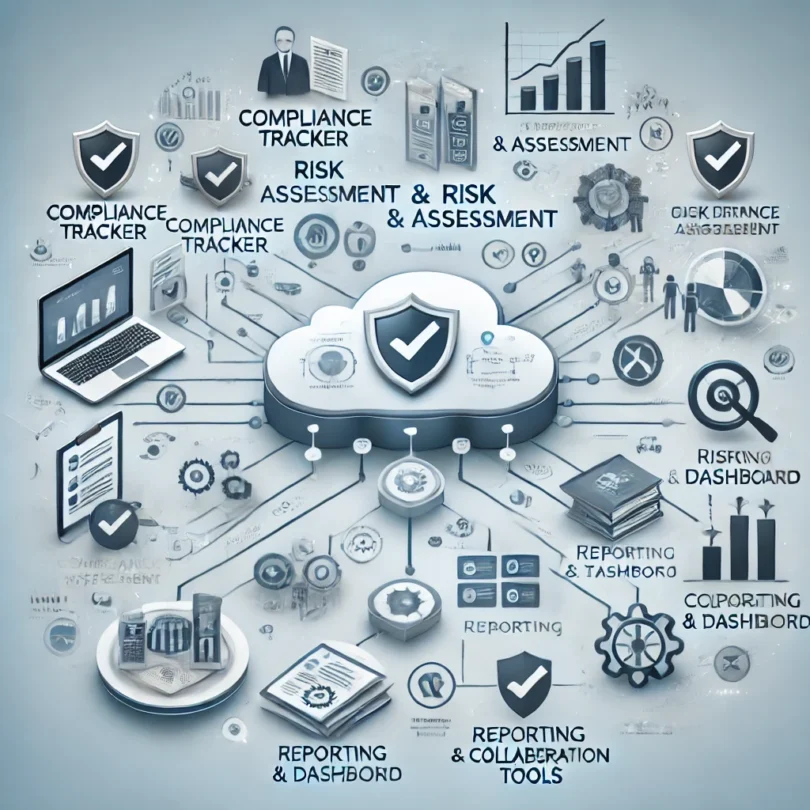In today’s fast-paced business environment, managing regulatory compliance and operational risk has become an increasingly cumbersome task for organizations across industries. Regulatory frameworks evolve continuously, and companies must ensure adherence to avoid penalties, reputational damage, and operational disruptions. Despite advancements in technology, many businesses still rely on manual processes or disjointed systems to manage compliance and assess risks. These methods are not only inefficient but also prone to errors, leaving organizations vulnerable.
The Problem: Regulatory Compliance and Risk Management Complexity
Organizations face significant hurdles when it comes to:
- Tracking Regulatory Updates: Regulatory requirements vary by industry and region, often requiring constant monitoring to stay updated. Missing even minor updates can lead to non-compliance.
- Data Overload: Compliance processes generate vast amounts of data that need to be tracked, processed, and analyzed. Manual handling of such data increases the risk of errors.
- Risk Identification and Prioritization: Identifying potential risks and their impact on operations is often challenging without a structured approach.
- Inefficient Reporting: Preparing compliance reports for internal and external stakeholders is time-consuming, especially when information is scattered across multiple systems.
- Operational Silos: Different departments may use separate tools or approaches, leading to a lack of visibility and collaboration.
The Solution: A Comprehensive Compliance and Risk Assessment Platform
To address these challenges, businesses need an all-in-one platform that simplifies regulatory compliance and operational risk management. Here are the key components of such a solution:
1. Compliance Tracker
A centralized system that tracks and updates regulatory requirements in real time. This feature ensures organizations are always informed of changes in laws, regulations, and standards applicable to their industry and region.
- Automated Updates: Notifications for new or amended regulations.
- Customizable Database: Tailor compliance requirements to match specific business needs.
2. Risk Assessment Module
An intelligent module that identifies, evaluates, and prioritizes risks based on their likelihood and potential impact.
- Risk Scoring System: Assigns scores to risks for better prioritization.
- Scenario Analysis: Simulates potential risk events and their outcomes.
- Actionable Insights: Provides recommendations for mitigating identified risks.
3. Reporting and Dashboard
A user-friendly dashboard that consolidates all compliance and risk data into a single view. Generate comprehensive reports for various stakeholders with just a few clicks.
- Customizable Dashboards: Visualize key metrics and trends.
- One-Click Reports: Generate detailed reports for audits, board meetings, or regulatory submissions.
- Real-Time Monitoring: Track compliance and risk metrics in real time.
4. Collaboration and Integration Tools
Facilitate seamless communication and collaboration between departments while integrating with existing systems.
- Cross-Functional Collaboration: Ensure departments work together to address compliance and risk issues.
- System Integration: Connect with ERP, treasury, and other operational tools to streamline workflows.
Building the Tool: A Vision for the Future
The proposed Compliance and Risk Assessment Platform could leverage emerging technologies such as Artificial Intelligence (AI), Machine Learning (ML), and Robotic Process Automation (RPA) to enhance functionality:
- AI-Powered Insights: AI can identify trends in compliance data and predict future risks, helping organizations stay proactive.
- RPA for Repetitive Tasks: Automate manual tasks such as data entry, document verification, and report generation.
- Cloud-Based Accessibility: Provide secure, anytime access to compliance and risk data.
- Machine Learning Algorithms: Continuously improve risk assessment models based on historical data and industry benchmarks.
Benefits of the Platform
- Efficiency: Save time by automating repetitive processes and centralizing data.
- Accuracy: Reduce errors in compliance tracking and risk analysis.
- Visibility: Gain a holistic view of compliance and risk across the organization.
- Proactivity: Address risks and compliance gaps before they escalate into major issues.
- Cost Savings: Minimize penalties, fines, and operational disruptions caused by non-compliance.
Conclusion
Managing regulatory compliance and operational risks doesn’t have to be a cumbersome process. By adopting a robust Compliance and Risk Assessment Platform, organizations can simplify workflows, enhance decision-making, and ensure they remain compliant in an ever-evolving regulatory landscape. The future lies in leveraging technology to transform how businesses approach compliance and risk management—moving from reactive to proactive strategies.







Leave a Comment
You must be logged in to post a comment.